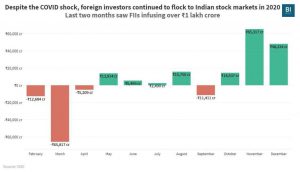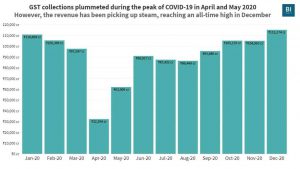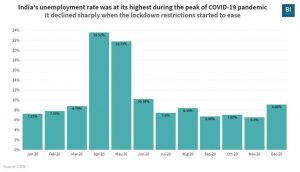JANUARY 19, 2021

- Indian benchmark stock indices have nearly doubled since crashing in March 2020.
- However, the economic situation might leave you confused if you compare it with the stock market performance.
- But there is a reason why the stock markets are on a bull run while the economy hasn’t picked up pace yet.
- Nilesh Shah, the managing director of Kotak Mahindra Asset Management company explains this phenomenon using a simple analogy.
The Indian stock markets have seen a bull rally like we’ve never seen before. After the bear hug in March 2020, Indian stock markets Sensex and Nifty have almost doubled after a rally of nearly 90%.

This has left many retail investors confused, making them wonder when the markets will correct and fall. To understand why the markets have been rallying, Business Insider India spoke to Nilesh Shah, the managing director of Kotak Mahindra Asset Management company.
To explain this phenomenon, Shah drew an analogy with 1977 blockbuster Hindi film Amar, Akbar, Anthony, starring Amitabh Bachchan, Bollywood’s most-celebrated actor.
“Our markets witnessed an impossibility – from the mother of bear markets in March 2020 to the mother of bull markets in December 2020, this is the fastest ever bull run that has happened. In our equity markets, three Amar Akbar Anthony came together – flows, sentiments and fundamentals,” he said.
Nilesh Shah has been part of the Prime Minister’s Economic Advisory Council since October 2019.

Many sceptics argue that the recent rally cannot sustain, and that a sharp fall is inevitable, given that the economy as a whole has contracted. In his retort, Shah explained that while markets are forward-looking, economic data is backward-looking.
He cited the spike in GST collections — a record high in December — aside from data from the Google mobility index and the Reserve Bank of India’s foreign exchange reserves to back his argument. “Put all of this data together, we are seeing a month-on-month improvement in the economy,” Shah explained.

Unemployment numbers show a decline, too
Shah notes that the unemployment number for the beginning of January is 7.4%, down from 9.06% in December. “The economy is slowly and steadily improving, and that is reflecting in our PMI number which is in the expansionary zone,” Shah said.
According to data obtained from Centre for Monitoring Indian Economy (CMIE), unemployment rates have shown an improvement when compared to the peak of the COVID pandemic.

As far as Shah is concerned, the rally has been spectacular but it is not a bubble yet. There are those, like Jim Rogers, who disagree.
Courtesy/Source: Business Insider India










































































































